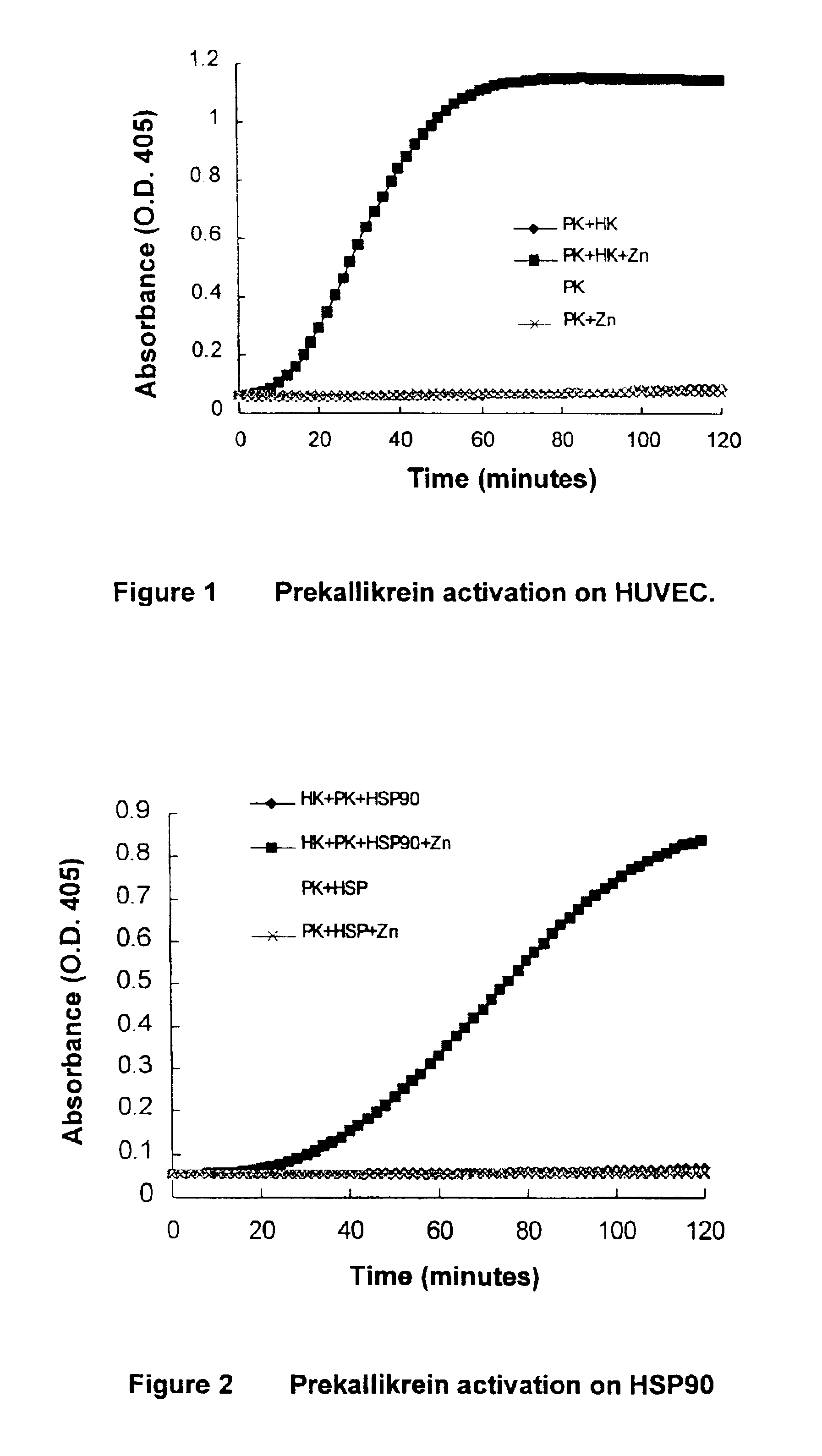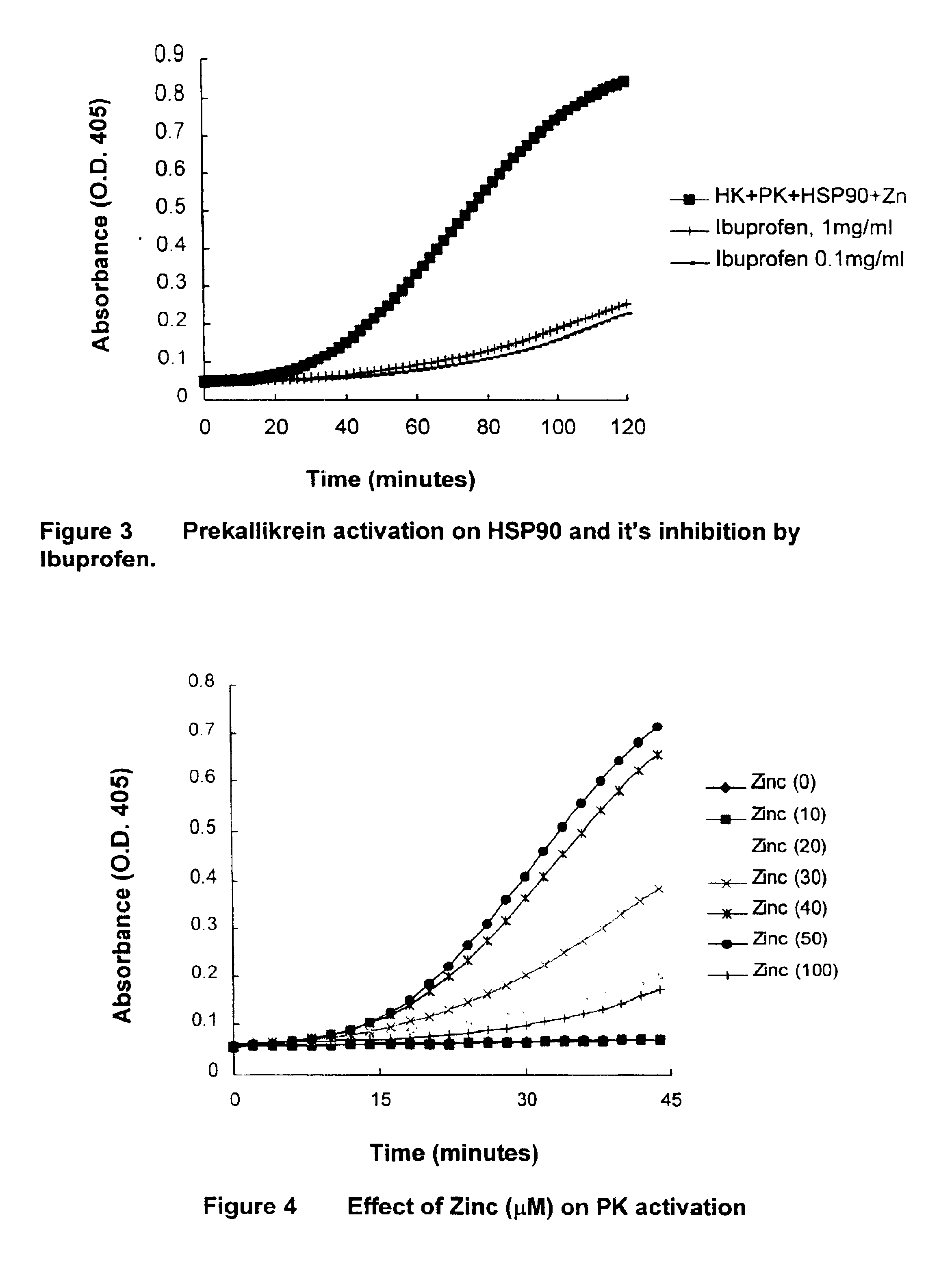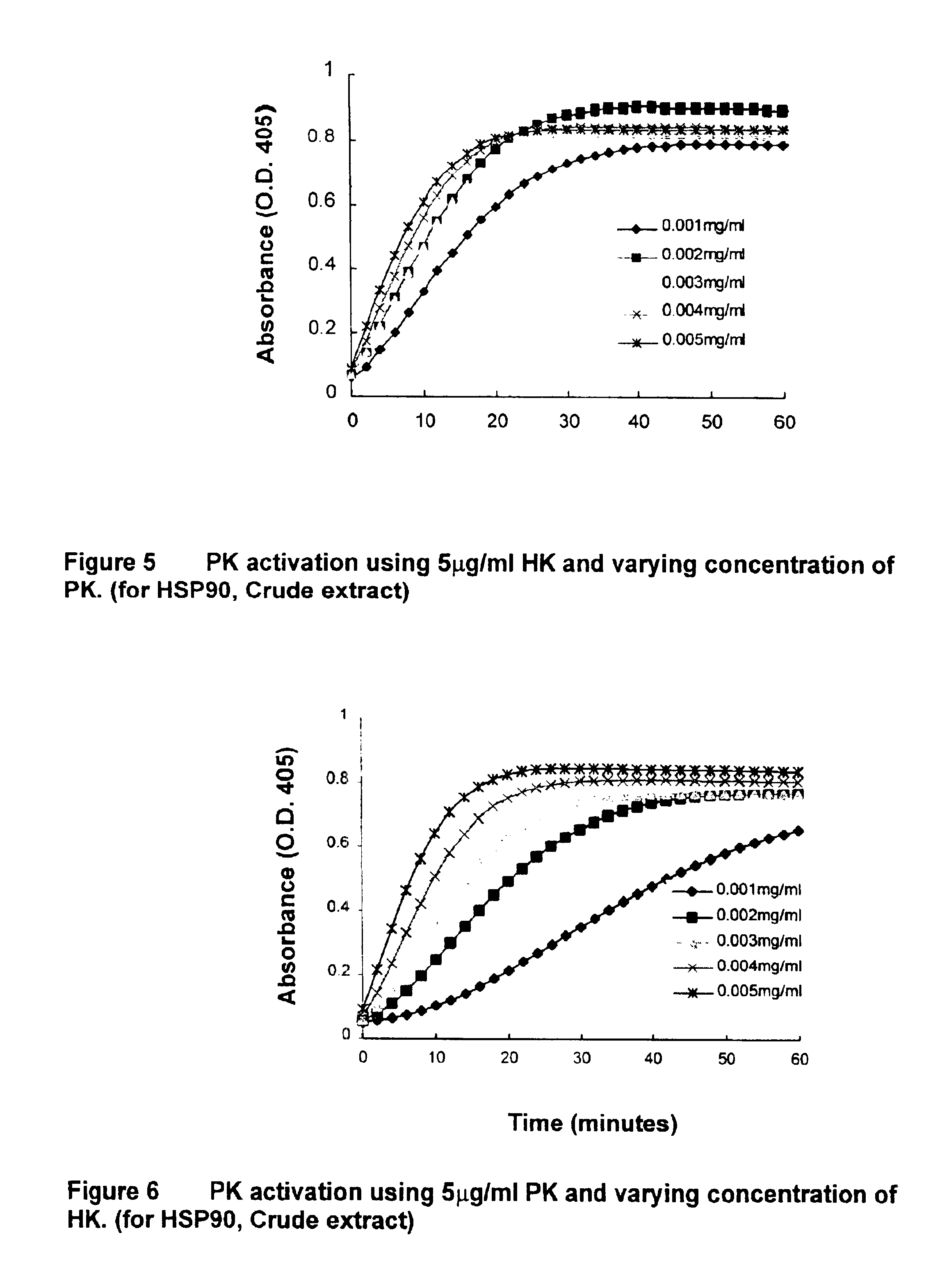Plasma prekallikrein activation and kallikrein production assay
a technology of activation and kallikrein, which is applied in the direction of immunological disorders, drug compositions, peptides, etc., can solve the problems of impure test materials containing plasma, high technical complexity of the reaction system, and complicated use of animal plasma per s
- Summary
- Abstract
- Description
- Claims
- Application Information
AI Technical Summary
Benefits of technology
Problems solved by technology
Method used
Image
Examples
example 1
Prekallikrein Activation Assays
[0063]Assays were performed in HEPES buffered saline (HBS) (10 mM Hepes, 137 mM NaCl, 4 mM KCl, 11 mM D-glucose, and 0.5 mg / ml RIA grade bovine serum albumin, pH 7.4), with a kallikrein specific substrate (0.6 mM S-2302). For assays using the cell-free system, 96 well disposable polystyrene microtiter plates (Dynatech Laboratories, Chantilly, Va.) were used. These microtiter plates were pretreated with 1% polyethylene glycol (Aquacide III, Calbiochem, Calif.) in HBS for two hours to prevent adsorption of proteins to polystyrene. The absorbance (O.D. at 405 nm or optical density at 405 nm) was monitored at room temperature on a Molecular Devices (Sunnyvale, Calif.) THERMOmax microplate reader. Just prior to the assay all the proteins were treated with 2.0 mM (4-amidinophenyl)methanesulfonyl fluoride (APMSF) for 15 minutes at pH 5.5, after which they were diluted 1:100 with HBS and incubated for 45 minutes to allow for the decomposition of any unreacted ...
example 2
Purification of the Prekallikrein Activating Factor
[0067]Since prekallikrein activation in this system could be inhibited by CTI, CTI was used as an affinity ligand to purify the proteins that bind to CTI. The activity of the prekallikrein activator was retained on the affinity column when CTI was used as affinity ligand. The CTI bound enzymatic activity was eluted with 0.5 M NaCl in HBS. The eluted fractions were dialyzed to remove the high salt content and assayed to confirm the activity. The proteins from the active fractions were separated by SDS-PAGE and transferred to nitrocellulose membrane for a ligand blot with biotinylated CTI. Ligand blot analysis revealed that biotinylated CTI bound to two major bands at about 60 and 90 kDa. Although a Coomassie Blue stain of the gel showed several protein bands, they were well separated and it was possible to get an amino acid sequence of these proteins.
Amino Acid Sequence Analysis and Identification of the Isolated Proteins.
[0068]Prote...
example 3
Prekallikrein Activation Using Purified HSP 90
[0070]HSP 90 was confirmed as a prekallikrein activator, which was functionally indistinguishable from the cytosolic extract (FIG. 2). A HUVEC activator system was functionally effective as well (FIG. 1). Activation was HK- and zinc-dependent and was inhibited by CTI. The incubation mixture used is as follows:
HSP 90 activator system.
[0071]50 μL buffer (HBS-BSA)[0072]10 μl HSP90 (50 μg / ml)[0073]10 μl Zinc chloride (500 μM)[0074]10 μl HK (35 μg / ml)[0075]10 μl PK (25 μg / ml)[0076]10 μl S-2302 (6 mM)
[0077]HUVEC activator system (in addition to the isolated HUVEC culture used therein).[0078]60 μl buffer (HBS-BSA)[0079]10 μl Zinc chloride (500 μM)[0080]10 μl HK (35 μg / ml)[0081]10 μl PK (25 μg / ml)[0082]10 μl S-2302 (6 mM)[0083]Incubate at room temperature, measuring O.D. at 405 nm every 2 minutes[0084]HBS: HEPES buffer, BSA: Bovine serum albumin,[0085]HK: High molecular weight kininogen, PK: Prekallikrein,[0086]S-2302: H-D-Pro-Phe-Arg-p-nitroani...
PUM
| Property | Measurement | Unit |
|---|---|---|
| Molar density | aaaaa | aaaaa |
| Molar density | aaaaa | aaaaa |
| Molar density | aaaaa | aaaaa |
Abstract
Description
Claims
Application Information
 Login to View More
Login to View More - R&D
- Intellectual Property
- Life Sciences
- Materials
- Tech Scout
- Unparalleled Data Quality
- Higher Quality Content
- 60% Fewer Hallucinations
Browse by: Latest US Patents, China's latest patents, Technical Efficacy Thesaurus, Application Domain, Technology Topic, Popular Technical Reports.
© 2025 PatSnap. All rights reserved.Legal|Privacy policy|Modern Slavery Act Transparency Statement|Sitemap|About US| Contact US: help@patsnap.com



